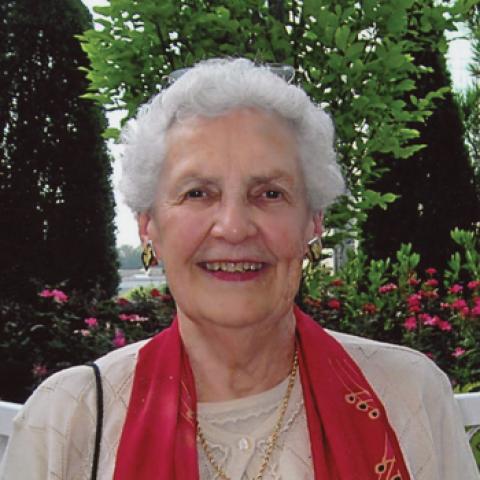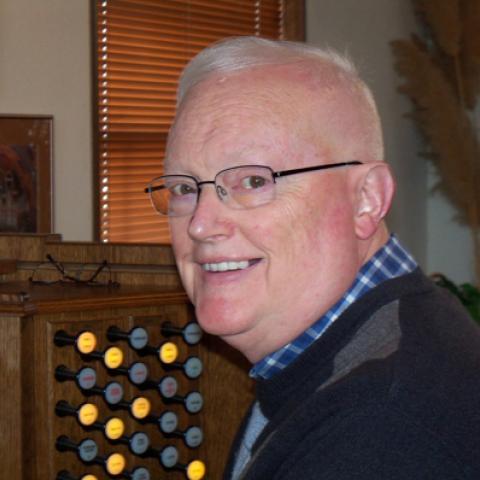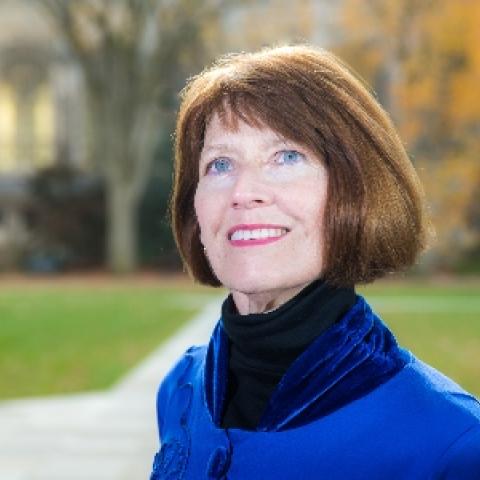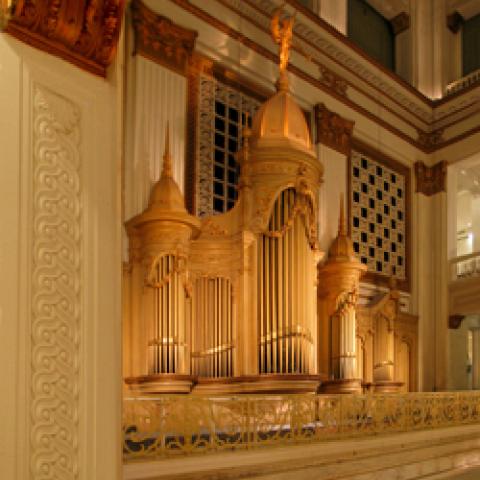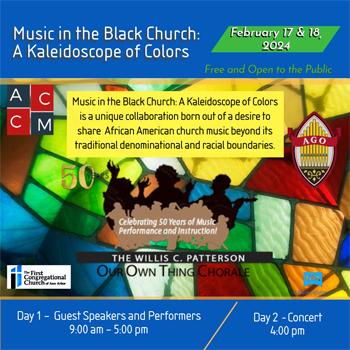
Music in the Black Church: A Kaleidoscope of Colors is a free 2-day Black History Month event sponsored by the American Guild of Organists Ann Arbor Chapter, the American Center for Church Music, Willis C. Patterson Our Own Thing Chorale (WCPOOTC), Virginia Sory Brown, and the First Congregational Church of Ann Arbor.
Saturday, February 17, 9:00 a.m.–5:00 p.m., features presentations and interactive workshops including a choral reading session with music supplied by GIA Publishing, Inc.; sessions on the use of organs including the Hammond; performances by the University of Michigan School of Music, Theatre and Dance voice and organ students, and opportunities for discussion. Present-ers include James Abbington of Emory University and executive editor of the African American Church Music Series by GIA Publications; Uzee Brown, Jr., of Morehouse College and director of the Ebenezer Baptist Church Choir; and Alice McAllister Tillman, music director of the WCPOOTC and artistic director of the Brazeal Dennard Chorale.
Sunday, February 18, 4:00 p.m., concert at First Congregational Church, Ann Arbor, featuring a sampling of music in the Black Church. The Brazeal Dennard Chorale will join the Willis C. Patterson Our Own Thing Chorale and guest soloists performing works by African American composers/arrangers including a performance of Adolphus Hailstork’s I Will Lift Mine Eyes.
For information: www.ourownthing.org.


